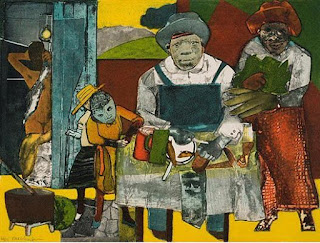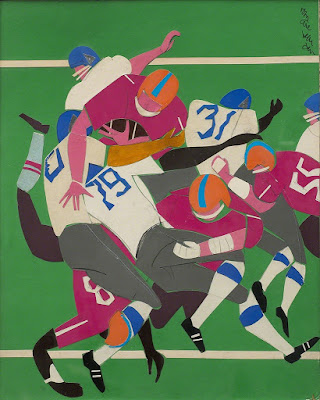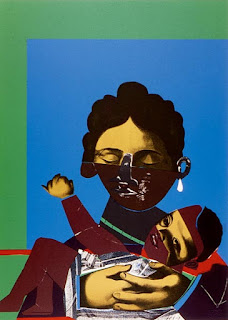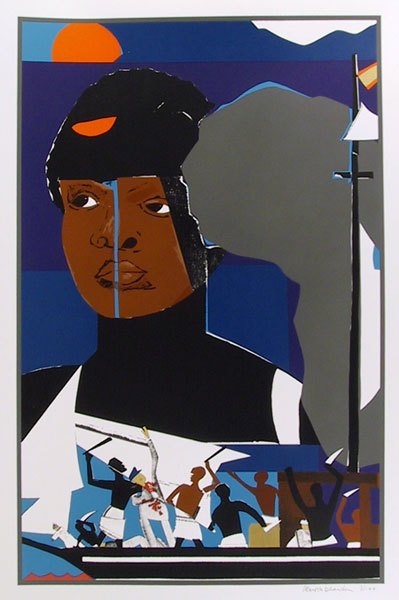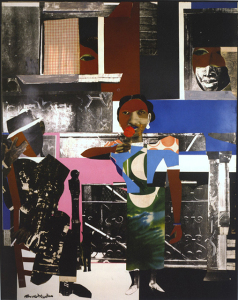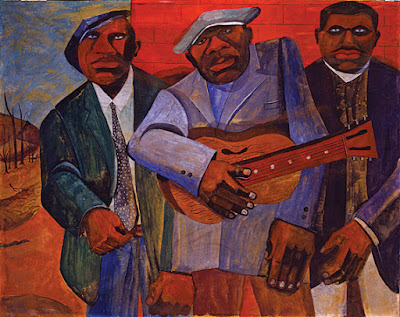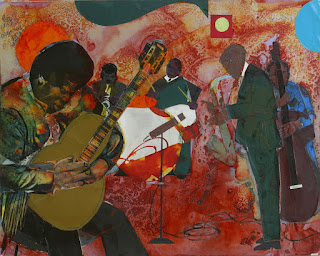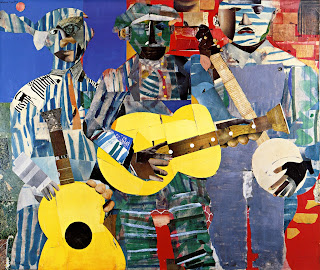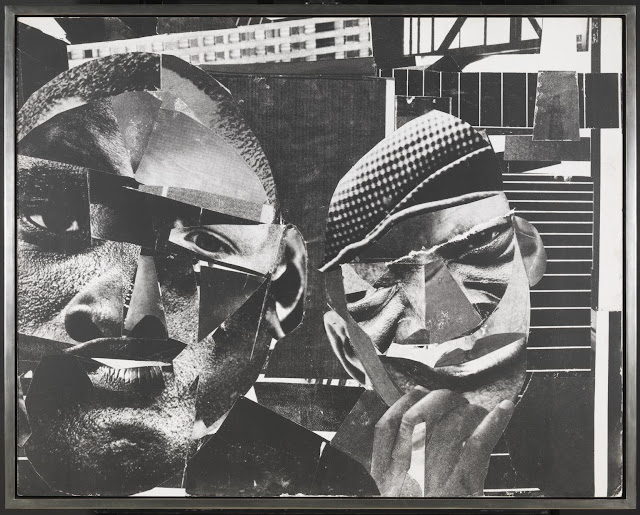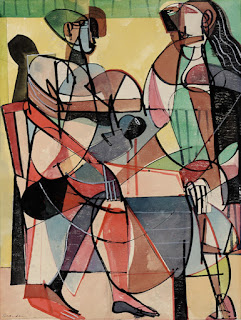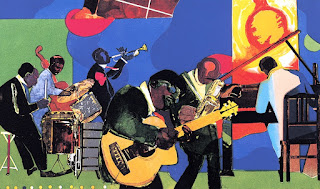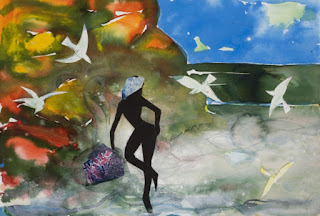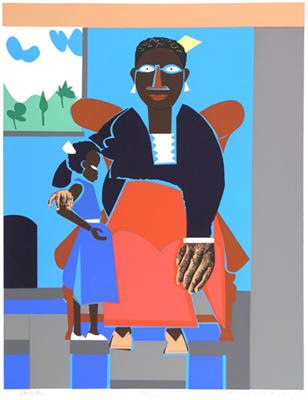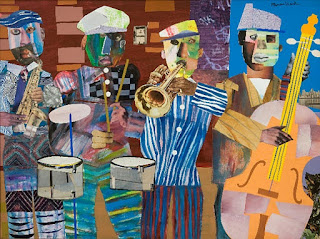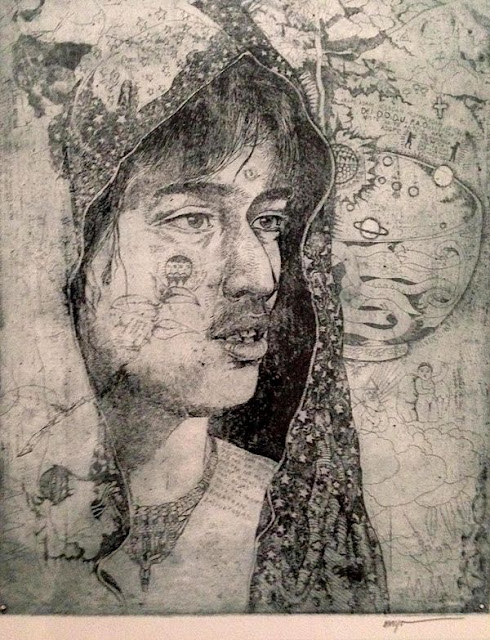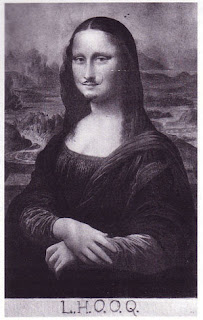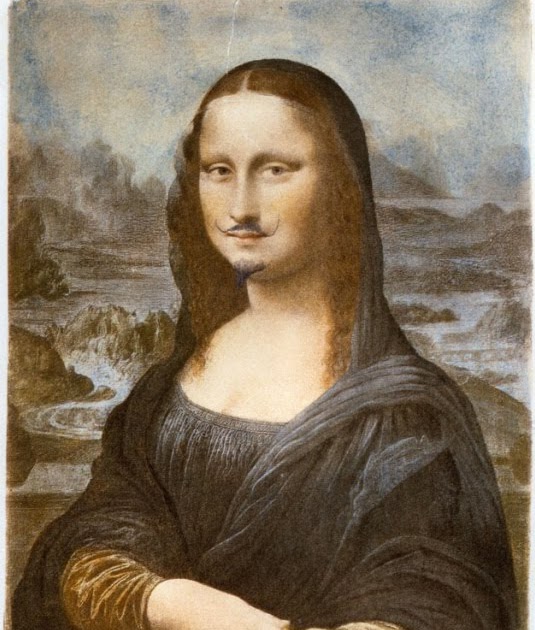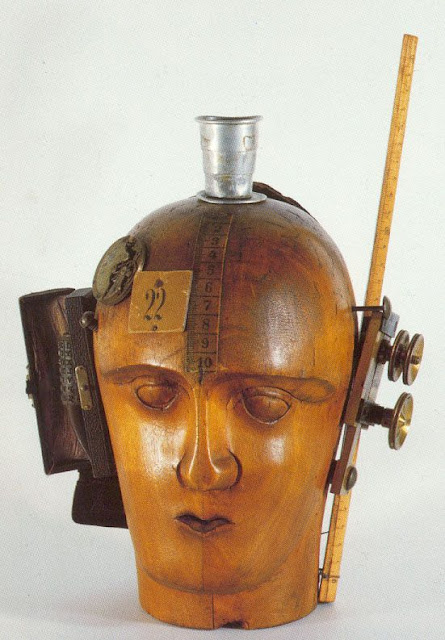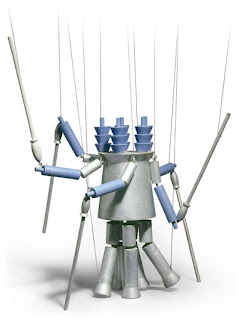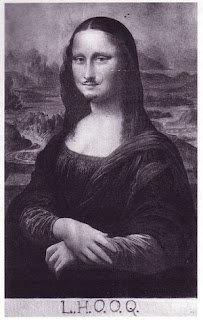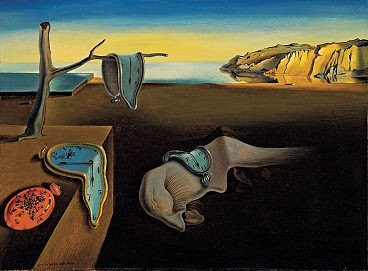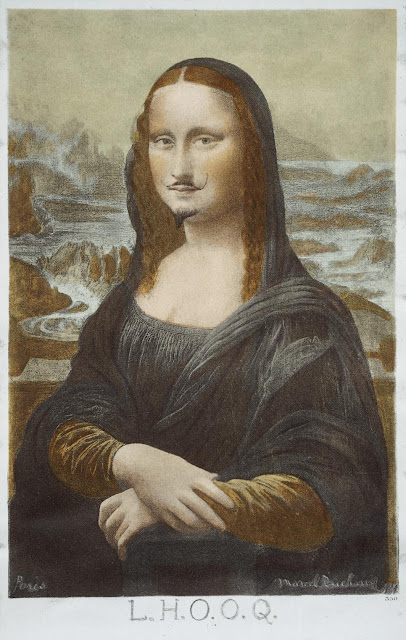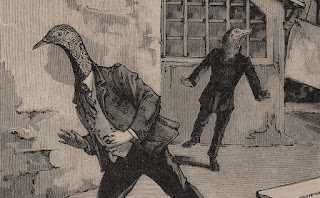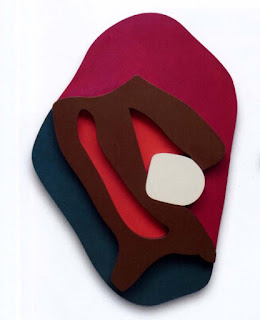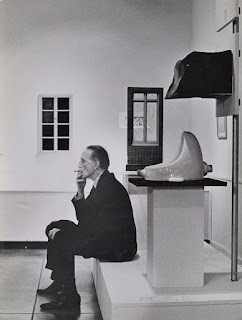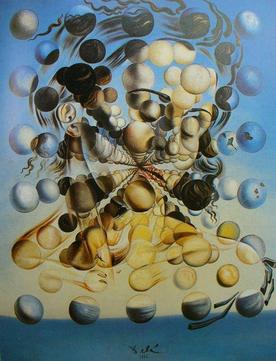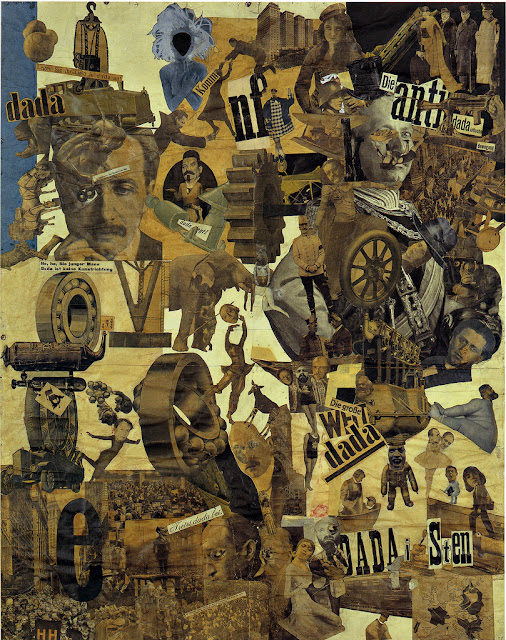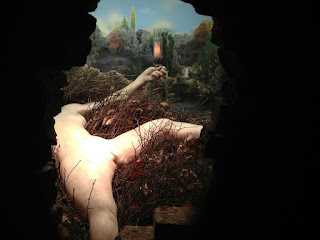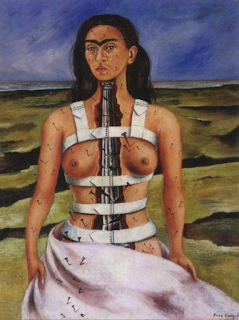Patchwork Quilt- Romare Bearden
This was painting by Romare Bearden around the late 1960s and 1970s. During this time, Bearden decided to start using more vibrant colors in his art work. He began doing this through the patterns in the patchwork quilt and his repetitive incorporation of cloth in his art pieces. Bearden stressed the idea that when certain things are removed from their normal context and are reworked, and then pushed into a new context, they receive a new display and meaning to them. For example, a patchwork quilt is rich in pattern and is made up of rags and articles of other materials considered secondary. The colors of the cloth in this painting contrasts the nude figure. This painting is expressing a distinctive African American tradition. I enjoyed this piece because I do not often see patchwork cloth and it caught my eye from the clash of the nude figure and decorative color of the quilt.
